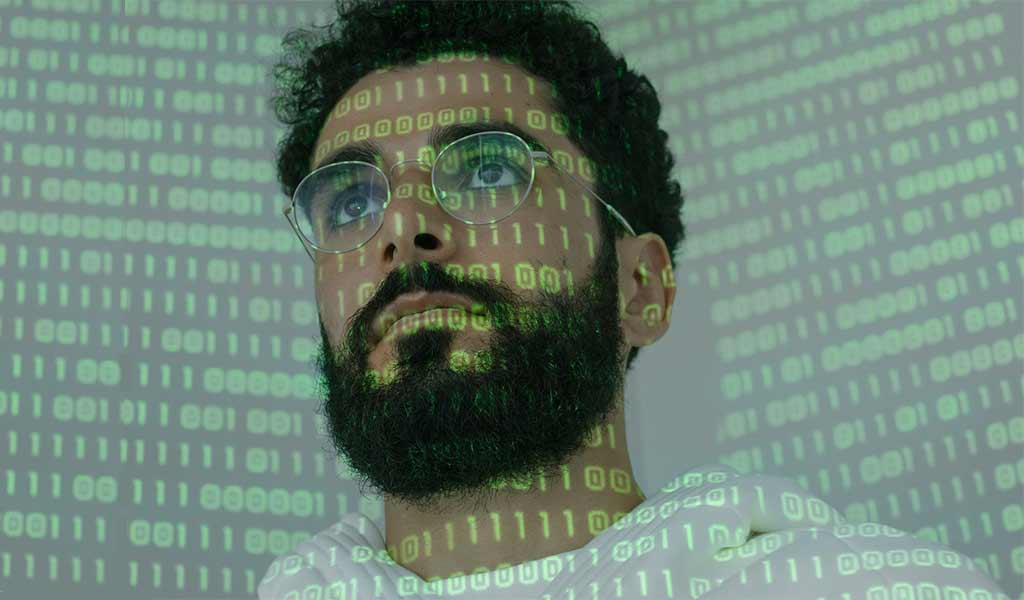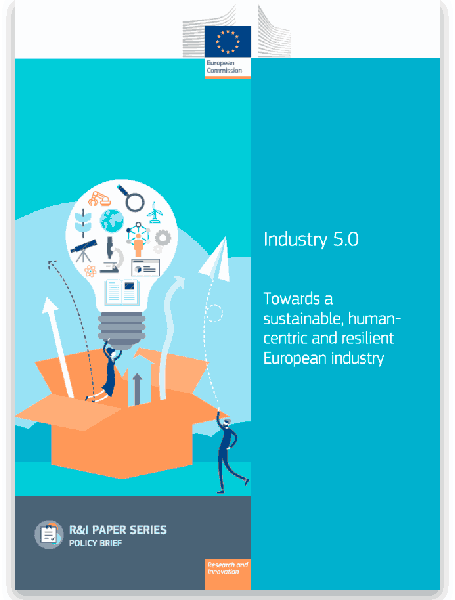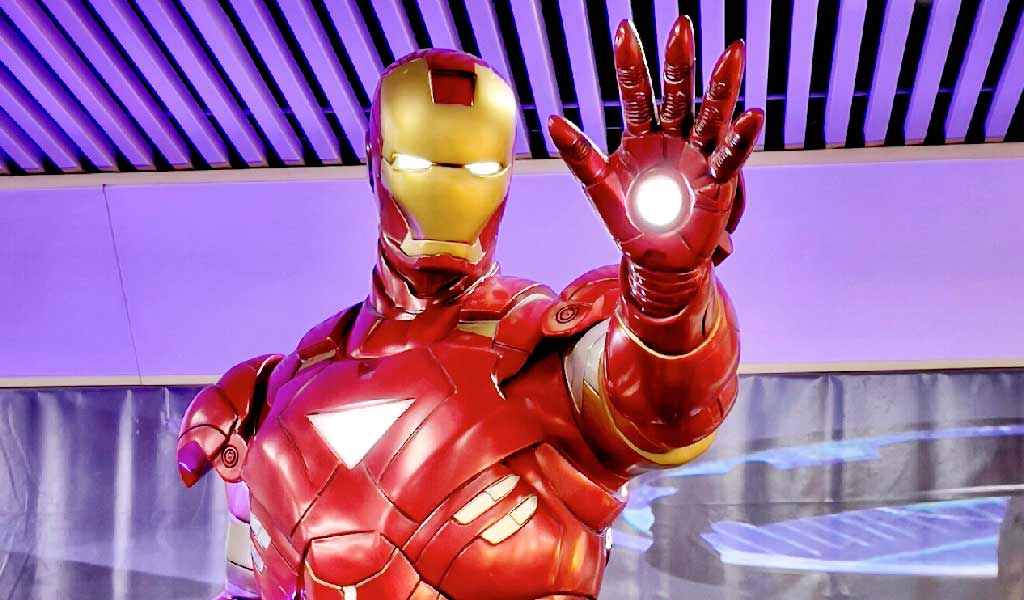Every day there is more and more talk about what will be the fifth revolution or industry 5.0, although many companies are still far from the so-called Industry 4.0. Industry 4.0 (yes, at this rate we will have industrial revolutions more often than Olympics).
Against this backdrop, a question arises: is it too ambitious to consider industry 5.0 before reaching 4.0?
To help you find an answer, we would like to reflect on the main novelties of this industrial "revolution" and answer the question of whether it is feasible for companies to think about industry 5.0 right now, even before 4.0.

What is Industry 5.0. The new approach.
To talk about what industry 5.0 brings to the table, we must start from the foundations of its previous "version", industry 4.0 (which are not few). We are talking about a major change in the operations of our industries thanks to the convergence of different technologies: IoT, big data, AI, cloud computing, robotics, advanced automation, etc. In short, a series of elements that aim to make industry more efficient, intelligent and digital today.
It is true that there are many organizations that are still working on implementing these changes today, as not everyone was equally prepared to take this step. So, does it make sense to talk about Industry 5.0 at this point? The answer is yes, since it is not necessary to go through version 4.0 to start with 5.0, but you can start incorporating some of the key elements of this new revolution right now.
Does it make sense to talk about Industry 5.0 when not all companies are ready for 4.0?
This fifth revolution, or rather version of the industry, revolves more around values than technology. It is true that it draws on the important development of Industry 4.0 but, unlike previous revolutions, here we are not talking about a technological leap that represents a breakthrough.
Industry 5.0 focuses more on the meaning we want to give to industry, from a moral rather than a technical point of view. The industry of the future will be efficient and productive, but it must also resume its important role as a social agent. This means putting people back at the center (something that Industry 4.0 seemed to have forgotten), adopting a more resilient model and improving environmental sustainability.
The 3 pillars of Industry 5.0 that Europe wants to promote

The concept of industry 5.0 is still alive and needs further development. This new approach arises from the need to adapt the industry to the new reality we live in, strongly influenced by environmental problems and the learning that the COVID pandemic has left us.
This topic has been placed very high on the agenda of the European Union, which aims to make its industry globally competitive and a leader in the world. In this regard, the EU wants to accelerate investment in research and innovation to facilitate the adoption of the following 3 basic pillars of Industry 5.0:
1. Human-centric approach
This is the main change of vision with respect to the previous version: that the needs and interests of people will be at the heart of the processes. All companies boast that people are their main asset and, in the end, the idea is to care for, consider and prioritize this "asset" in industrial processes as well, including the updating of their skills and knowledge.
Sustainability
There is a limit to the resources available to us. It is necessary for industry to adopt a circular economy model that allows better optimization of resources, reduction in the consumption of raw materials and the use of waste, thus reducing its impact.
Increasing the quality of products and processes must also be addressed from this perspective. Higher process quality also means better utilization and therefore less waste and energy consumption. Likewise, higher product quality translates into a longer service life, i.e., less waste.
The increased process quality also means less waste generation and energy consumption.
In addition, the collaborative work between people and technology will allow further progress in the customization of demand already initiated in Industry 4.0, but taking it to new limits. New technologies can make it easier for the customer to customize his order even before it is manufactured, thus reducing surplus stocks, resource consumption and waste.
3. Industry resilience
The third pillar talks about the robustness of the industry, so that organizations can more easily cope with disruptions of all kinds. This is the main lesson of the pandemic, but these events can also be of geopolitical, climatic, etc. origin.
Achieving this involves developing resilient supply chains and having a flexible production system that can adapt to variations in demand.
The management of knowledge and information within each link of the production chain is another key aspect, since it allows better decisions to be made based on more information.
And of course, the management of people, since they are the ones who will make these decisions and, ultimately, the center of any industrial process.
What Marvel has taught us about Industry 5.0
Here we want to allow ourselves the license to resort to fiction (we already did it in the Tron article) to illustrate what we are talking about. In a parallel universe, specifically that of the Marvel movies, Tony Stark (Ironman) would be the global benchmark of industry 5.0.

Really? Yes, check it out:
- Tony and his company have cutting-edge technology at their disposal (AI, cobots, advanced automation, virtualized processes, etc.) but not to work in isolation.
- He (the person) is at the center: he brings the ideas and that touch that only a human can have.
- And finally, it uses the information provided by the system to its advantage and relies on it to make decisions. In other words, it obtains its full potential while keeping itself as the central key player.
This is in a way seeing the industry as a craft. A potter once had a potter's wheel and strings to create his pots, now our engineers have the latest technology. But at the end of the day, it is the craftsman's hand that makes the magic.
So, 5.0 revolution or 4.5 upgrade?
As we have seen, this new industry 5.0 is not based on a paradigm shift due to a technological change. Therefore, we can ask ourselves if it is really a new industrial revolution or simply an update that seeks to solve some of the problems that are limiting the true deployment of Industry 4.0.
This question of form is quite subjective, depending on what one understands by "industrial revolution". But we don't want to get lost in the form, we want to get to the bottom line. And the bottom line shows a shift from where we came from.
It is clear that technology is a fundamental pillar, but not at the expense of people. Automation is not just robotization. As we have seen, it is important to keep workers at the center of the process because they are the ones who have the real potential to develop new industry models.
It must be clear that technology is not the end, it is only the means. In fact, it is necessary to have a good base before betting on technology so that it can really unfold its full potential. And that base is built with human talent and good production processes.
Conclusion: automation but with added value
In conclusion, we believe that what industry 5.0 offers us is necessary and that we can already bet on it. In other words, it is not necessary to have gone through technological development and digitalization to start thinking about values such as resilience, sustainability or people.
This is, at least, the reflection we make at SMARTPM, where we are dedicated to automation but with a different industrial vision.
Through our work, we aim to make factories smarter, more resilient, more efficient and environmentally sustainable. We strongly believe that the industry of the future has a critical role to play for the benefit of society. We have this vision of the industry of the future in our DNA. our DNAthanks to the talent and values of the people who are part of our team. We rely on technology and processes as the engine of change, but without neglecting the talent of the people.
If you are interested in automating your production processes with added social value, we would like to meet you - we already have something in common!
Header photo: cottonbro | Ironman Photo: Massimo Virgilio
